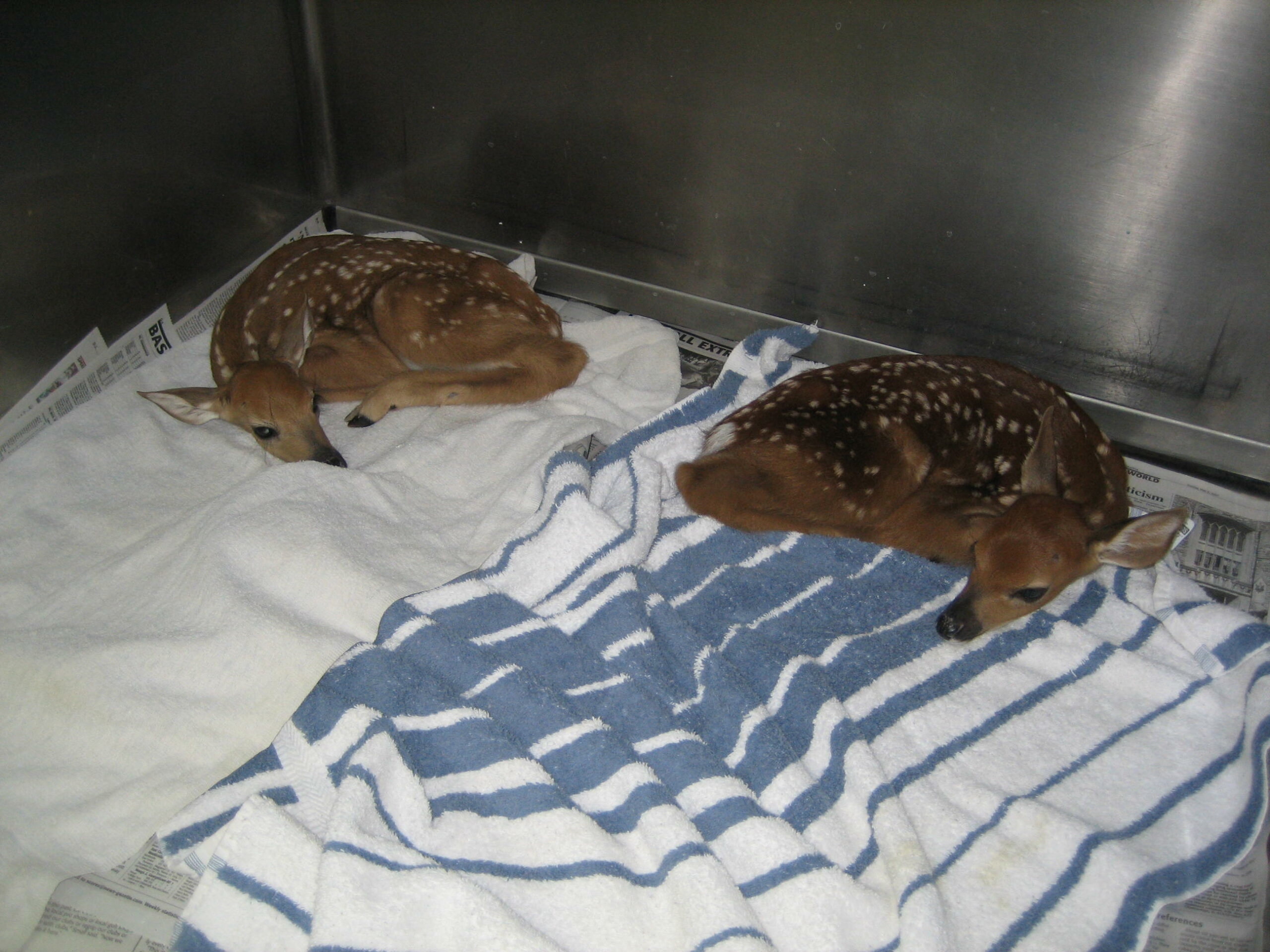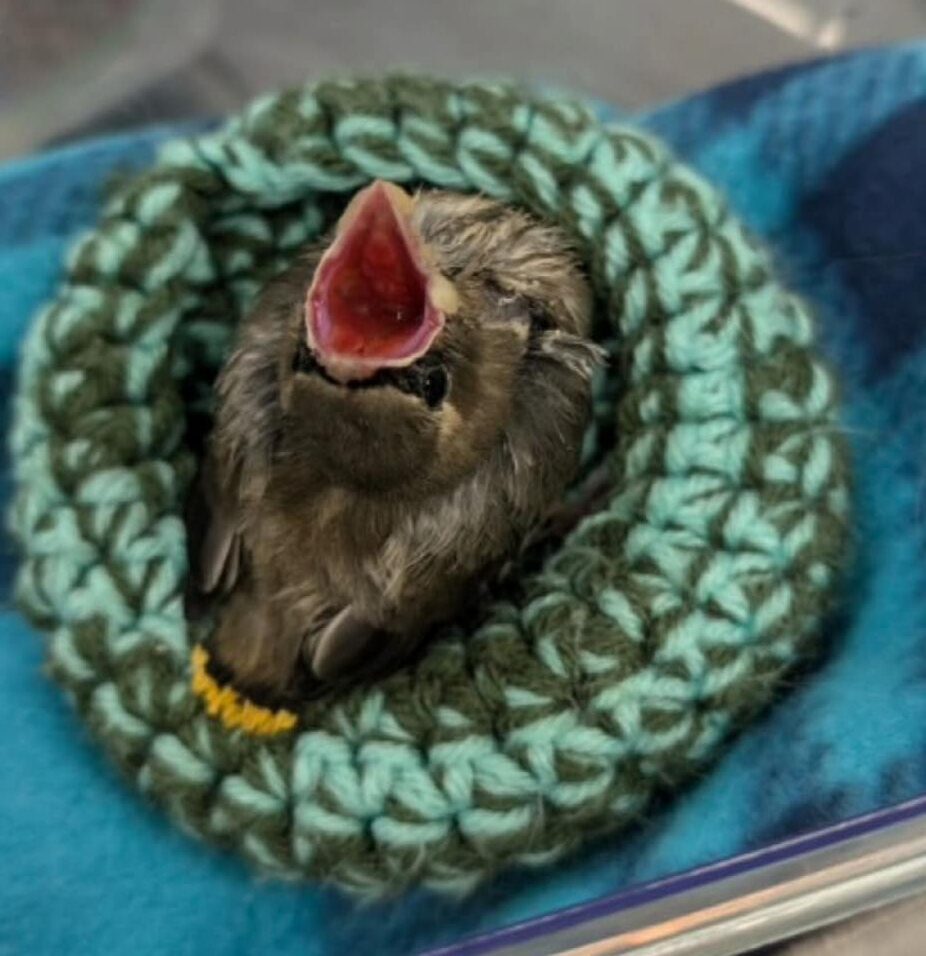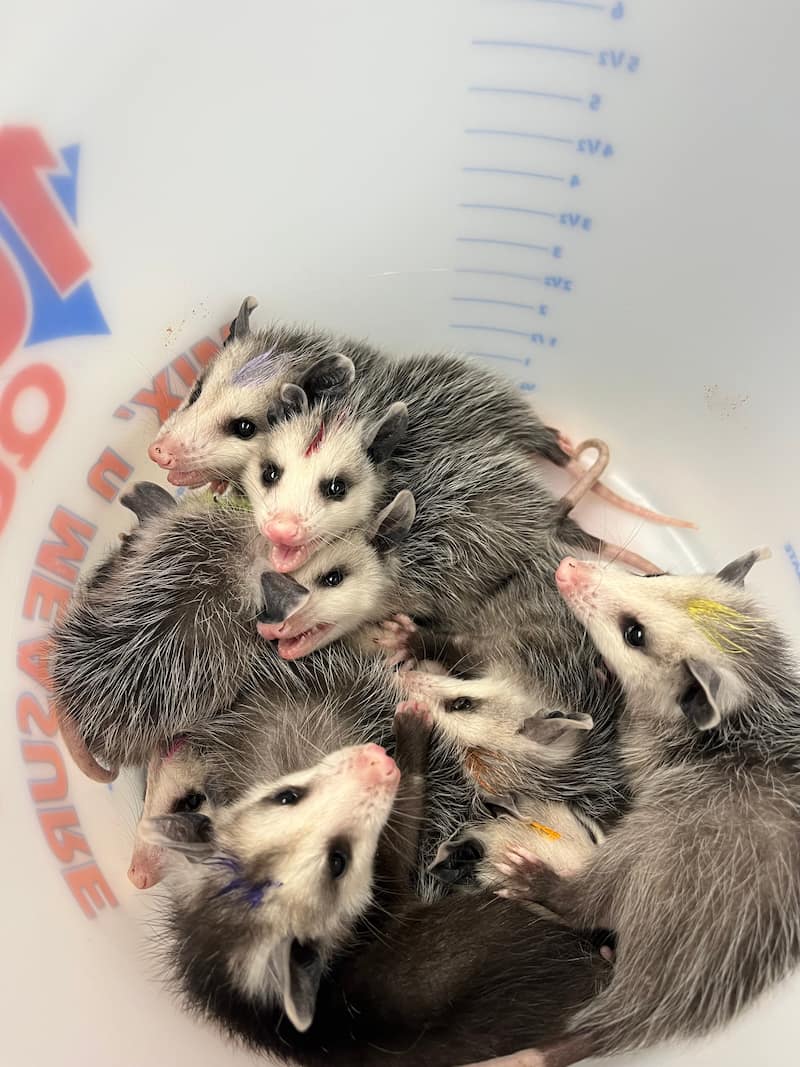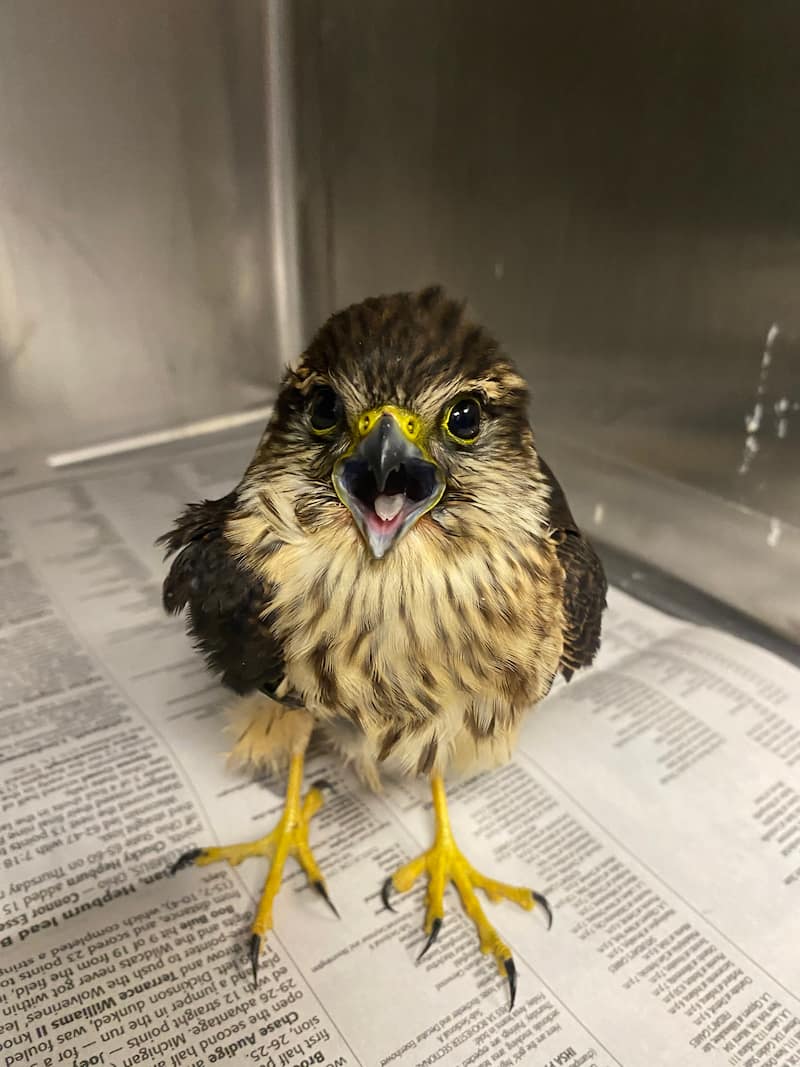Every year, the Wildlife Medical Clinic receives a wave of calls throughout the summer season about white-tailed deer fawns. Often, these animals are alone, lying down near a house, or sometimes even on a doorstep. Although this may seem like an animal in need, there are some facts about deer and their babies that you may want to read about before intervening.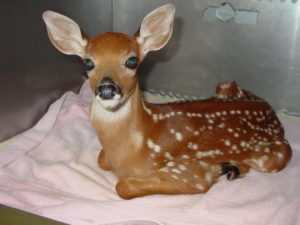
When are fawns typically born?
As we see with many other wild animals, white-tailed fawns start popping up in the spring and summer months. They are most commonly born April through July, with a majority being born in June. While does can have up to 3 fawns at one time, they typically have just a single offspring.
Why am I seeing a newborn fawn without its mother?
Right after they are born, fawns aren’t yet strong enough to keep up with the activity level of their mothers. Because of this, they are often left alone in one spot all day by the mother. Commonly, this will be in an area with tall grass or bushes; sometimes they could be left next to houses or backyards. The doe will then leave to find food for themselves and develop milk for their nursing babies. Foraging away from the fawns also keeps attention from predators diverted away from the newborns.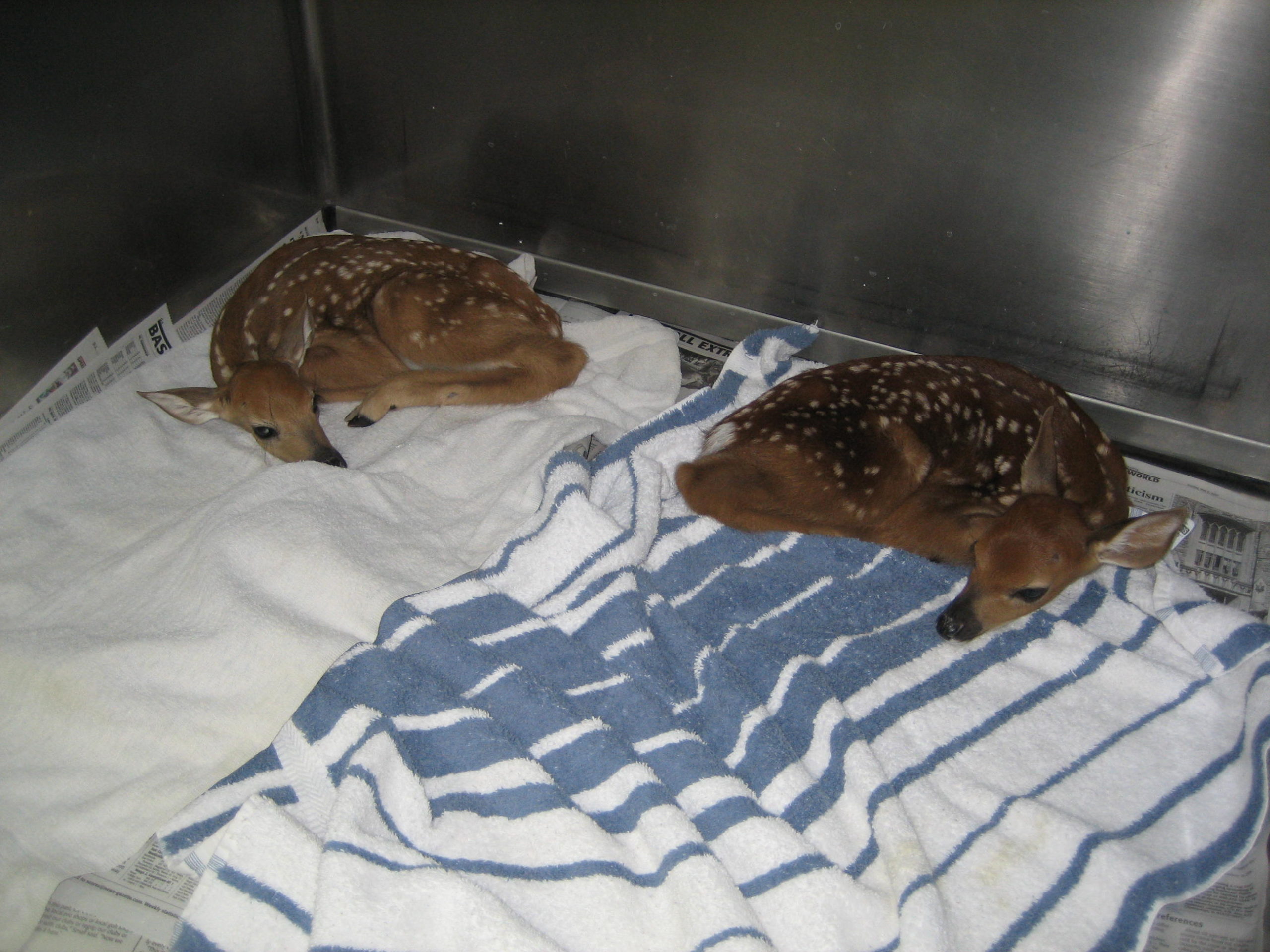
Myth or fact: The mother won’t accept their baby if it’s been touched by a human.
This is a very common myth! Does will still accept their babies if they’ve come into contact with humans. Despite this, there is some benefit for us to stay away from the fawns. Fawns are born odorless, which helps keep them safe from predators. So, the real danger from humans or a dog coming into contact with fawns is the potential to leave scent on the fawn, making them more vulnerable to predators.
What should you do if you are worried about the lone fawn?
If you are concerned simply because the fawn is alone, remember that they are commonly left alone by their mothers in one spot for the entire day! This allows the mother to feed and protect their babies. Instead of approaching the fawn, it is suggested to monitor the fawn for 24 hours. If the fawn hasn’t moved in 24-48 hours, you should call your local conservation officer or wildlife center for advice.
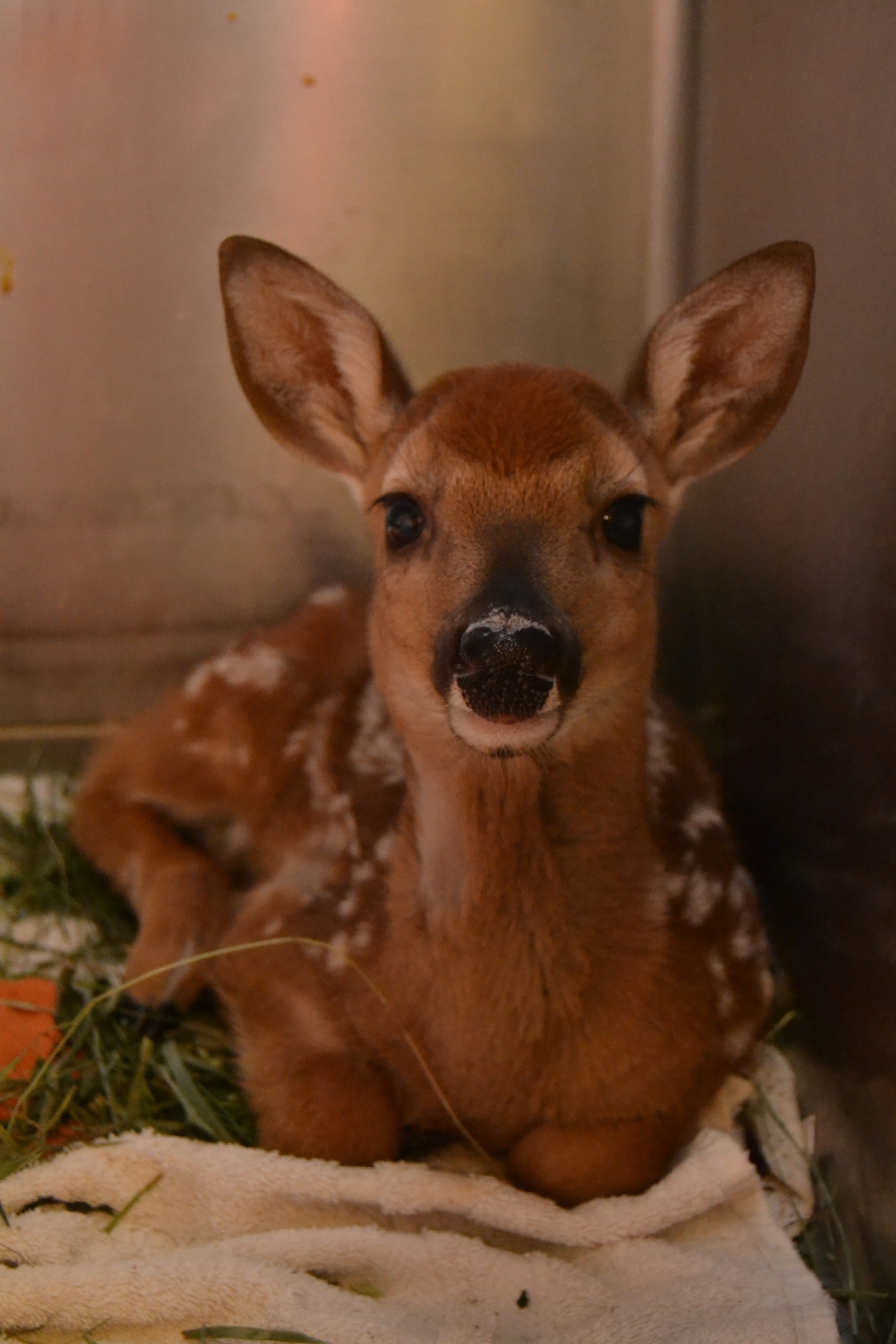
Fawns are identifiable most commonly by their white spots overlying their coat on their back, which last for 3-4 months after they are born. If they still have spots they should be left alone as long as there are no obvious medical concerns. Fawns tend to lose their spots at the same time they wean from their mother.
Do fawns have a better chance of survival with the mother or in a medical center?
If there are no medical conditions afflicting the fawn, its best chance at survival is to remain with the mother. This is why you may be encouraged to put a fawn back or leave it alone if you find one alone. Fawns are prone to injuries in captivity and the nutrition quality of the mother’s milk is difficult to mimic with commercial formulas. Fawns also quickly and easily become used to human company, which can make them non-releasable if drastic enough.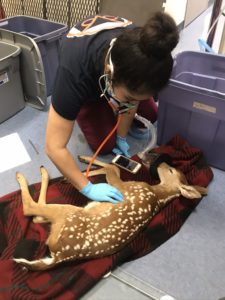
Overall it is highly encouraged to leave fawns alone if you cannot see any overt injuries. If you have observed the fawn in the same spot for over 24-48h hours and remain concerned, please reach out to your local wildlife conservation officer or licensed wildlife rehabilitation facility, such as the Wildlife Medical Clinic, for advice before making contact with the fawn.
Written by Selena Harrison, class of 2022.

